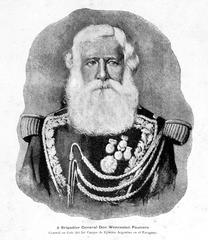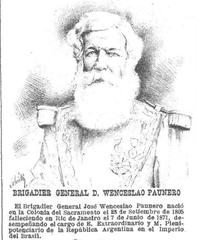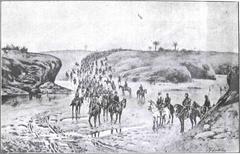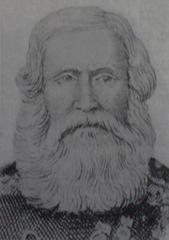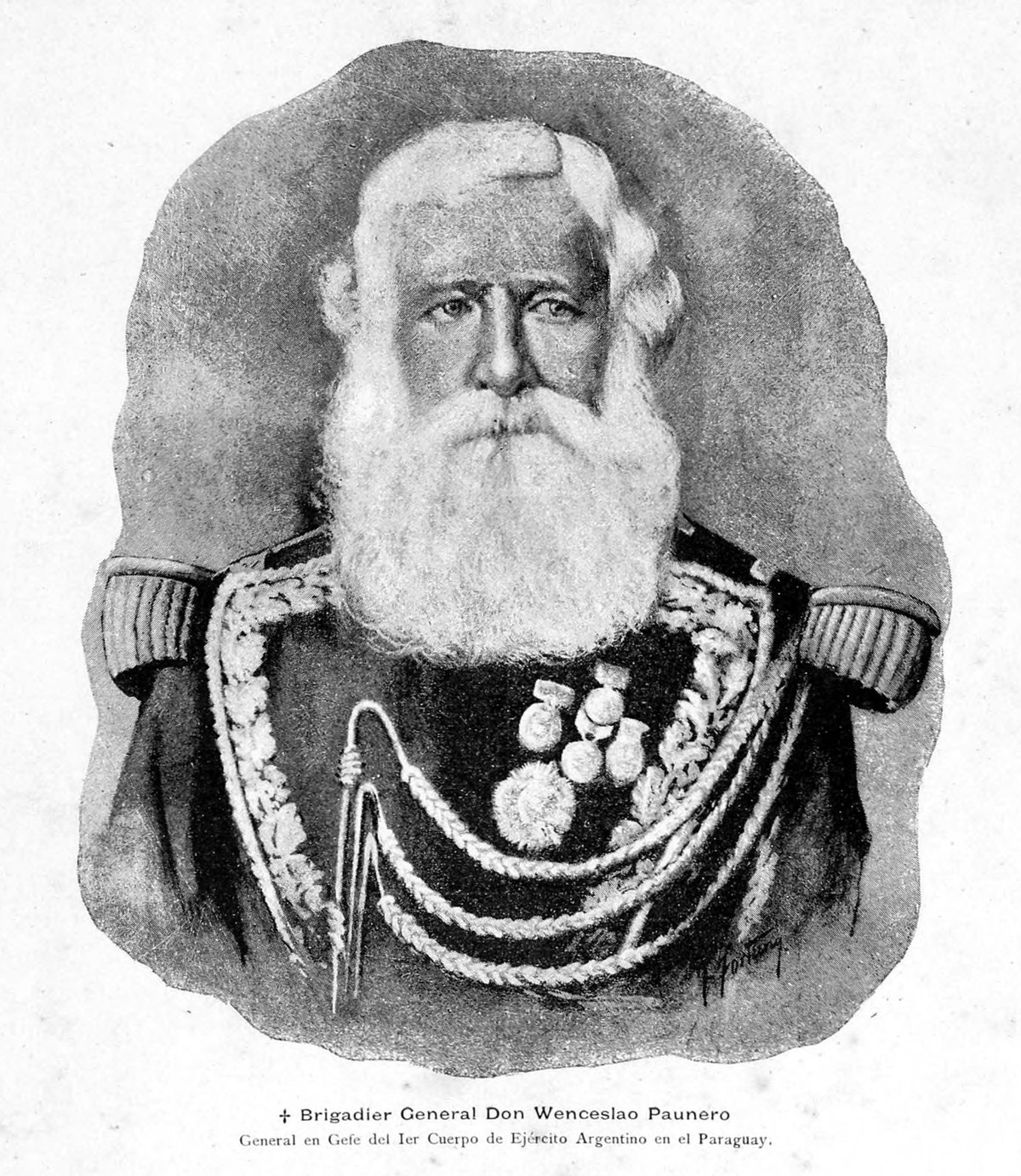
Wenceslao Paunero Buenos Aires: Visiting Hours, Tickets, and Historical Site Guide
Date: 15/06/2025
Introduction: The Legacy of Wenceslao Paunero in Buenos Aires
Buenos Aires, the vibrant capital of Argentina, is a city where history, culture, and urban life intertwine. Among its storied streets and celebrated landmarks, the legacy of General Wenceslao Paunero (1805–1871) stands out, reflected in the neighborhoods of Palermo and Recoleta. Streets like Calle Paunero and Avenida General Wenceslao Paunero, along with the general’s tomb in Recoleta Cemetery, invite visitors to trace the footsteps of a pivotal figure in Argentina’s 19th-century nation-building.
This comprehensive guide delivers essential information for travelers: historical context, visiting hours, ticketing, accessibility, recommended tours, transportation tips, and nearby attractions. Whether you are delving into Argentina’s complex political past, seeking out contemporary art, or enjoying the café culture and verdant parks of Palermo, the sites associated with Wenceslao Paunero offer a rewarding journey into the heart of Buenos Aires.
For more details, visitor tips, and cultural context, consult resources like the Buenos Aires City Government, Recoleta Cemetery, and Secrets of Buenos Aires.
Who Was Wenceslao Paunero?
General Wenceslao Paunero was a key military and political leader in 19th-century Argentina. His career encompassed major national conflicts, including the Cisplatine War, the Battle of Pavón, and the Paraguayan War. Paunero’s efforts were instrumental in consolidating Buenos Aires’ influence over Argentina’s provinces, a legacy reflected in the city’s commemorative street names and historical sites. While some remember him as a champion of national unity, others recognize the controversies surrounding his military tactics and policies (Historia Hoy).
Exploring Calle Paunero: History, Access, and Visitor Highlights
Location and Getting There
Calle Paunero is situated in the Palermo neighborhood—renowned for its leafy avenues, historic mansions, and cultural vibrancy. The street is easily accessible via public transport: take Subte Line D to Plaza Italia, then walk or use local buses. Taxis and rideshare services are also widely available.
Accessibility
Palermo’s urban design is pedestrian-friendly, with wide sidewalks and relatively flat terrain. Most areas are accessible for visitors with mobility needs, though some older buildings may have limitations.
Walking Tour Highlights
- Calle Paunero: Offers a glimpse into Buenos Aires’ layered past, with residential architecture and historic plaques.
- Nearby Attractions: Enjoy the Bosques de Palermo (rose gardens, lakes, sculpture trails), Museo Evita, and the Latin American Art Museum of Buenos Aires (MALBA).
- Local Cafés: Experience Palermo’s famed café culture with stops at historic “Cafés Notables.”
Tips for an Engaged Visit
- Guided Tours: Join a historical walking tour for in-depth context. Local operators and online platforms regularly offer tours featuring Calle Paunero (Secrets of Buenos Aires).
- Best Seasons: Spring and autumn are ideal for walking and outdoor exploration.
- Safety: The area is safe during daylight hours; always remain aware of your belongings.
FAQ
-
Do I need a ticket to visit Calle Paunero?
No—Calle Paunero is a public street and is accessible at all times. -
Is Calle Paunero accessible by public transport?
Yes—use Subte Line D to Plaza Italia or nearby bus routes. -
Are guided tours available?
Yes, check local tour operators for walking tours that include Calle Paunero.
Avenida General Wenceslao Paunero: Urban Context and Cultural Significance
The Avenue in Palermo
Avenida General Wenceslao Paunero traverses Palermo, one of Buenos Aires’ most cosmopolitan neighborhoods. The avenue is lined with embassies, residential buildings, and key cultural institutions, making it a central corridor for both locals and visitors.
Proximity to Landmarks
- Bosques de Palermo: Open daily, 6:00 AM–10:00 PM, free admission.
- MALBA: Tuesday–Sunday, 12:00 PM–8:00 PM, ARS 450 (~USD 4.50).
- Japanese Garden: Tuesday–Sunday, 10:00 AM–6:00 PM, ARS 250 (~USD 2.50).
Memory and Contemporary Culture
The avenue’s name honors Paunero’s nation-building role and acts as a marker of collective memory. Contemporary artists, such as Wenceslao Paunero (b. 1993), enrich the area’s cultural fabric through installations and graphic works, often showcased at events like OPEN Buenos Aires.
Getting There and Practical Tips
- Use Subte Line D (Palermo or Plaza Italia) or local buses.
- The area is pedestrian- and bike-friendly; bike rentals are available.
- Most cultural institutions provide accessible facilities.
What to See and Do
- Enjoy Bosques de Palermo’s outdoor spaces and events.
- Visit MALBA and the Japanese Garden for art and nature.
- Attend art exhibitions and workshops.
- Experience Palermo’s diverse culinary scene.
FAQ
-
What are the hours for nearby attractions?
See above for hours of Bosques de Palermo, MALBA, and the Japanese Garden. -
How do I reach Avenida General Wenceslao Paunero?
By Subte Line D or bus. -
Are there tours focused on Palermo?
Yes, guided walking and bike tours are available (Buenos Aires Tourism Official).
Palermo’s Historical Sites and Cultural Tours
Historical and Cultural Context
Palermo transformed from a rural expanse into Buenos Aires’ largest and most diverse neighborhood, retaining elements of its colonial origins alongside 21st-century vibrance (Buenos Aires City Government).
Main Attractions
- Japanese Gardens: A tranquil escape.
- Eco-Park: A modern ecological park.
- Museo Nacional de Arte Decorativo: Housed in a stunning mansion.
- MALBA: Showcasing Latin American modern art.
- Street Art: Palermo is famed for its murals and graffiti, often referencing historical figures and themes.
Tours and Visiting Essentials
- Public transportation is efficient; Subte and buses reach all major sites (Manifesting Travel).
- Guided tours offer historical insights and access to hidden gems.
- Visit in spring or autumn for the best weather (My Adventures Across the World).
- Palermo boasts a range of accommodations, dining, and nightlife options.
FAQ
-
Is there a monument exclusively for Paunero?
No, his legacy is reflected in street names and plaques. -
Best times to visit?
Spring and autumn, on weekdays or off-peak hours. -
Are historical tours available?
Yes, both walking and bike tours are common.
Visiting the Tomb of Wenceslao Paunero in Recoleta Cemetery
Introduction and Historical Context
The Tomb of Wenceslao Paunero in Recoleta Cemetery is a National Historic Monument, providing a poignant connection to Argentina’s formative years. Paunero participated in the wars of independence, the War of the Triple Alliance, and held roles as Minister of War and Ambassador to Brazil (Recoleta Cemetery).
Location, Hours, and Admission
- Location: Recoleta Cemetery, Junín 1760, Recoleta, Buenos Aires.
- Hours: Daily 09:00–17:00.
- Admission: Free for Argentine residents; non-residents pay 16,100 ARS (2025).
Navigating the Cemetery
- Maps are available at the entrance; Paunero’s tomb is often marked as no. 340 (Recoleta Cemetery).
- Download PDF guides or use cemetery apps for easier navigation.
What to Expect
- Paunero’s tomb stands out with its modernist design in a landscape of ornate mausoleums.
- Photography is welcome, but maintain a respectful silence.
- Paths are cobblestone and uneven—wear comfortable shoes.
Suggested Itinerary
- Morning: Start at Café La Biela.
- Late Morning: Explore Recoleta Cemetery, including Paunero’s tomb and Eva Perón’s mausoleum.
- Afternoon: Visit the Basílica Nuestra Señora del Pilar and Museo Nacional de Bellas Artes.
- Lunch: Try nearby parrillas or cafés.
- Evening: Visit El Ateneo Grand Splendid bookstore.
Guided and Self-Guided Tours
- English-language tours provide historical context (Recoleta Cemetery).
- Self-guided options are available; audio guides and downloadable maps enhance the experience (The Broke Backpacker).
Practical Tips
- Bring water, sun protection, and a camera.
- Secure personal items and observe respectful behavior.
- Most signage is in Spanish; consider hiring an English-language guide.
- The cemetery’s cobblestones may be challenging for those with mobility issues. Some tours can accommodate special needs with advance notice.
Nearby Attractions
- Museo Nacional de Bellas Artes (Food and Travel Utsav)
- El Ateneo Grand Splendid (Food and Travel Utsav)
- Café La Biela (Las Maplone)
- Renowned parrillas in Palermo (Food and Travel Utsav)
Best Times to Visit
- Mornings and weekdays are quieter.
- Spring and autumn feature mild weather and blooming gardens (Travel Vagabonds).
FAQ
-
Are guided tours in English available?
Yes, several operators offer English-language tours. -
Is the site wheelchair accessible?
The cemetery has uneven paths; some tours accommodate special needs. -
What is the best time of year to visit?
Spring and autumn provide the best weather.
Summary and Next Steps
Visiting the Paunero-related sites in Buenos Aires—Calle Paunero, Avenida General Wenceslao Paunero, and the tomb in Recoleta—immerses travelers in the city’s historical narrative and cultural present. These locations blend commemoration of a pivotal national figure with vibrant urban life, inviting exploration through guided tours, museum visits, and leisurely strolls in Palermo’s parks.
For the best experience:
- Visit in spring or autumn.
- Take advantage of guided tours and audio guides.
- Use public transportation for easy navigation.
- Download the Audiala app for curated audio tours and event updates.
- Follow official tourism channels for the latest information on Buenos Aires’ historical and cultural offerings.
Begin your journey today and uncover the stories behind the streets, monuments, and memories of Wenceslao Paunero in Argentina’s captivating capital (Recoleta Cemetery, Buenos Aires Tourism Official).
